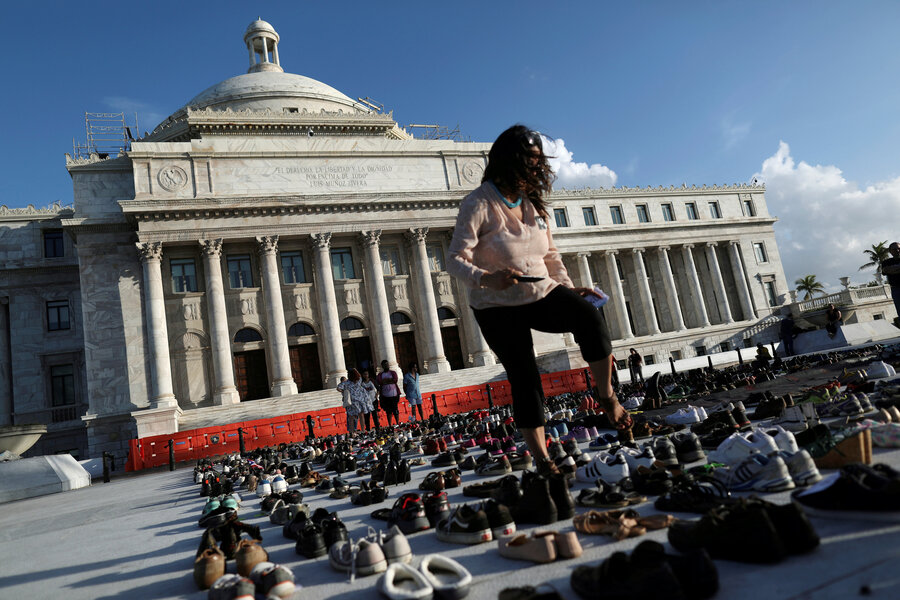A year later, Puerto Rico says ‘Come on down’
Loading...
A year ago a group of neighbors in the small Puerto Rican city of Humacao desperately signaled for help.
They made a sign visible from the air: “S.O.S. Necesitamos agua/comida,” “We need water/food.” Their effort symbolized the urgency of the situation in the United States territory, which had been pummeled by hurricane Maria.
Recently the neighbors put up a new sign for aerial view that read “Bienvenidos,” or welcome. It signaled “Tourists, please visit us.”
Power has finally been restored to the entire island, though the grid is hardly as stable and robust as would be desirable. Most hotels have reopened or will soon, and new ones under construction will join them in the coming months.
“[W]e’re ready to turn the page,” Humacao resident Janet Gonzalez told CBS News in August. The photo of their cry for help had spread virally worldwide. Now the neighborhood hopes “our new positive message spreads just as fast,” she says.
The looming anniversary of the Sept. 20, 2017, megastorm, whose damage is estimated at more than $90 billion, has brought with it sober assessments of what went wrong. An independent study published late last month raised the death toll to 2,975, far more than the original estimate of 64, making Maria one of the nation’s worst natural disasters. That total included deaths that occurred up to six months after Maria but were attributed to the storm, with its widespread power outage and the difficulty of reaching remote areas with relief supplies.
“We never anticipated a scenario of zero communication, zero energy, zero highway access,” Gov. Ricardo Rosselló has said. He will form a commission to study how to respond better, including whether to establish a registry of vulnerable people who would need urgent help if a future disaster struck.
A Sept. 4 report from the US Government Accountability Office found that more than half (54 percent) of the federal emergency workers sent to Puerto Rico were not fully qualified for the positions they held.
“Federal, state, and territory officials noted that the shortages and lack of training led to confusion...,” the GAO report said, while also noting a paucity of workers who spoke Spanish as another key problem.
In a response, the Federal Emergency Management Agency has promised to learn from its inadequate response to Maria and improve its future practices.
One thing Americans might do this winter is visit the island. A sunny beach would be a welcome respite to many and pump money into the local economy.
Tourists ready to be of even more help have plenty of choices, points out an article on the Travel & Leisure website. In true “citizen scientist” fashion they might take a snorkeling trip that includes collecting data on native species or a kayak expedition after dark that could study the effects of light pollution. Other programs let visitors plant trees or clean up the coastline.
At the same time, Puerto Ricans themselves are leading the way in restoring their island home.
“We believe [Puerto Rico is] going to yield one of the best comeback stories in tourism history,” says Brad Dean, chief executive of Discover Puerto Rico, a new nonprofit group that helps visitors plan their trips. “The story isn’t about what Maria did to Puerto Rico. It’s about what people achieved after Maria.”
A year after the disaster the signs at last are pointing toward progress.







